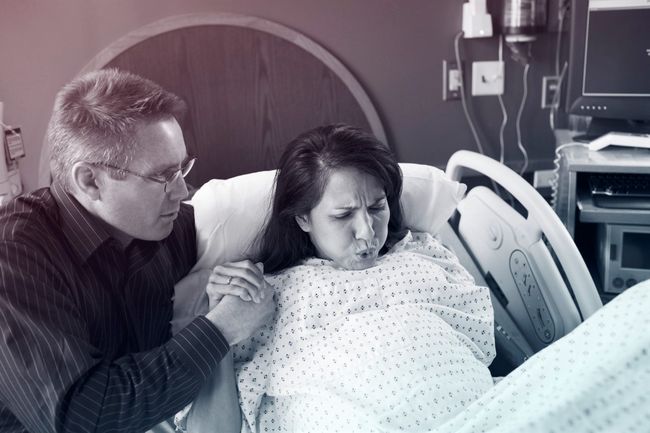During the height of the COVID-19 pandemic, many U.S. hospitals changed their rules regarding visitors. That was also the case in hospital delivery rooms, where some people had to give birth without their partners or with limited visitors to support them after birth. While many American hospitals have relaxed their guidance, some still have restrictions in place—or may switch back to them in an instant, depending on the state of the pandemic. Here’s what to know if you’re expecting soon.
How Labor and Delivery Rules Changed During the Pandemic
Prior to the pandemic, many hospitals had rules about who could be in the delivery room and who could visit afterwards. But when COVID-19 began spreading in 2020, a lot of hospitals had limitations. Some only let the pregnant person in the room. Others allowed only one support person to be present. And many individuals had to give birth wearing masks. This left many in the lurch when it came to their family members, doulas, and birth photographers.
Hospitals were in a hard spot, too. If a pregnant person had COVID-19, health care workers needed to care for the patient and a newborn. We hardly had a handle on how to treat COVID-19 in adults when the pandemic began, let alone newborns. Infants in neonatal intensive care units (NICUs) were another consideration. Some hospitals would not let parents visit their children once the baby went into the NICU, adding more stress onto parents.
NewYork-Presbyterian hospitals made headlines after instituting a ban on partners in labor and delivery rooms, despite World Health Organization recommendations that a companion be present during labor and birth. But the hospital reversed its position after a state order from former New York Governor Andrew Cuomo went into effect, requiring that hospitals allow one support person in the delivery room during labor and immediately postpartum.
First-time New York City mom-to-be Raina Fieland watched her March 15, 2020, due date pass and then watched her March 24 induction date grow closer as the COVID-19 crisis became more and more dire. She started having contractions on March 22, and when she called her doctor at NewYork-Presbyterian, she was told that their visitor policy was in the process of being changed and partners were no longer allowed.
“Leaving for the hospital to give birth to your first baby then being told on the way, with no notice, that my husband, Brandon, would not be allowed in, was obviously devastating and I cried the whole car ride,” she says. Luckily, since the policy hadn’t gone into effect yet, Fieland was able to have her husband by her side during a difficult labor and her C-section, but he was required to leave two hours after their son’s birth.
Mitchell Kramer, M.D., chief of obstetrics and gynecology at Huntington Hospital—part of the Northwell Health network in Long Island, New York—says his staff had to work hard to ensure everyone was kept safe at the time. "Our hospital is protecting patients and staff from cross-contamination by using any and all protective measures," says Dr. Kramer. "We are assuming patients are infected and have them and the significant other wear masks."
Again, many of these policies have lifted and hospitals have been able to use lessons (and research) from the pandemic to guide future policies. Mental health experts have been very vocal about the hardships that some restrictions put on a pregnant person. So even if your hospital has some restrictions in place when you deliver, they'll likely not be as intense and will be more likely to be guided by what we already know about the virus.

What About My Hospital?
While sweeping changes in visitation policies occurred in hospitals across the country during the pandemic, and many may have been eased since then, the only way to know about the policies at your location is asking directly. And remember, things can still change rapidly as COVID-19 spreads, especially if a new variant emerges. So it’s good to know the current rules and future rules should another outbreak occur. It’s also smart to know if your doctor or midwife will deliver at other locations.
Either contact the labor and delivery unit or reach out to the doctor or midwife who will be attending your birth. Talk about current testing protocols and other rules, and see if they know what the policies will be should cases go up. Even if future restrictions are put into effect, they may not be as strict as they were at the beginning of the pandemic.
Some hospitals may allow a partner in the room and postpartum visitors, but they can institute masking polices as well as requirements that visitors have a negative test. Rapid COVID-19 testing is now more widely available, which is helping to guide decisions. Hospitals may require people to be current on COVID-19 vaccinations as well.
